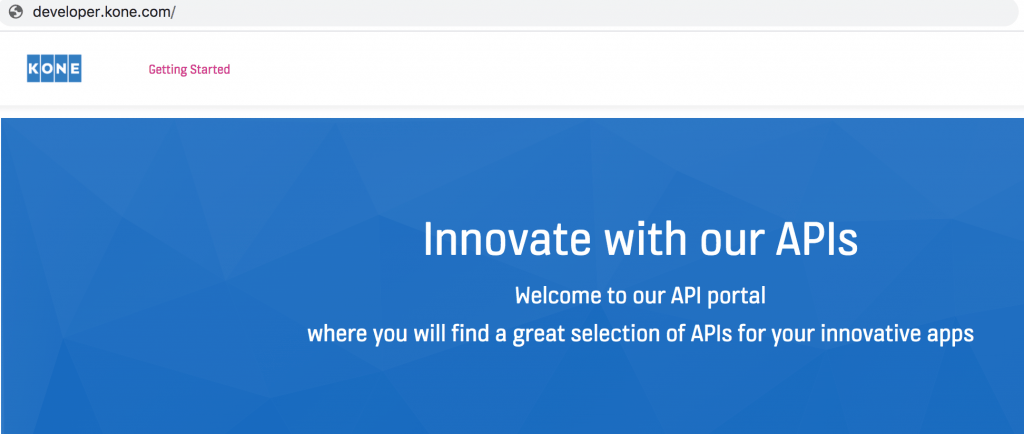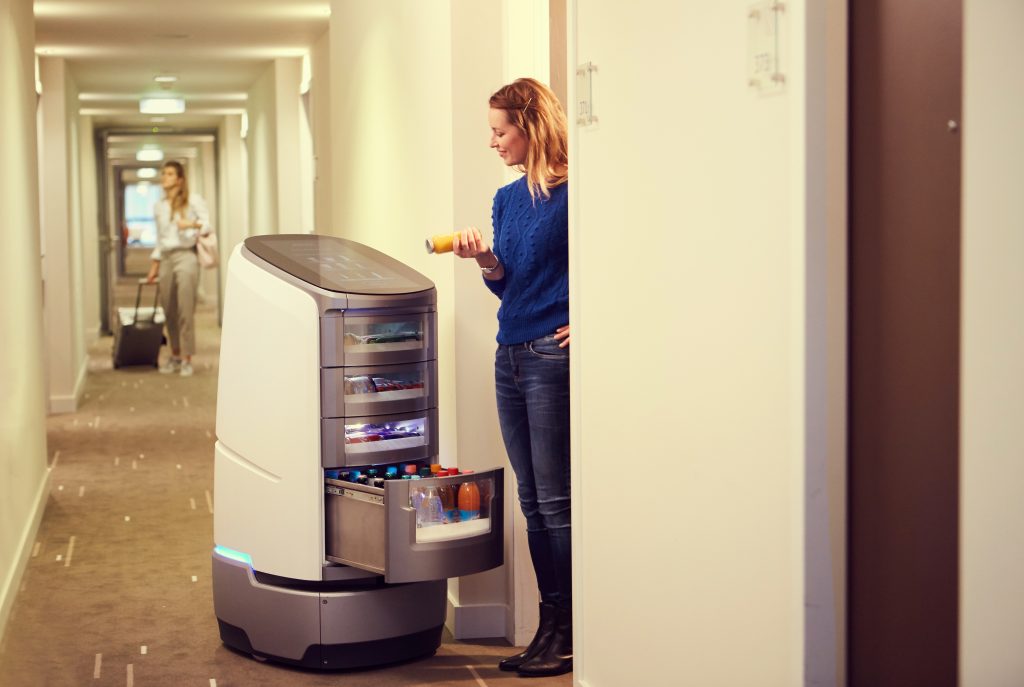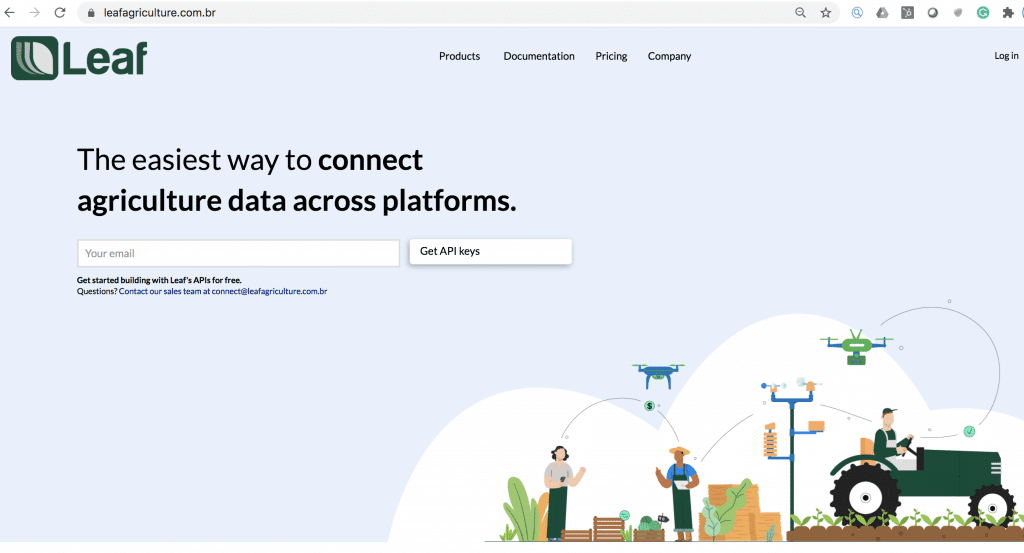Do you want to expand your ecosystem and business with new services?
It is not enough to innovate internally. You need external parties to create compelling services for your customers.
Today, you cannot engage with partners without APIs.
KONE realized the importance of partners several years ago. It manufactures elevators, escalators, and building doors. Also, KONE maintains more than 1.3 million units worldwide. However, its mission is to improve the flow of urban life. To do this, it needs more than lifts and regular maintenance.
KONE’s customers seek new solutions and services. These new services could include robots for in-house logistics. Or they could serve as receptionists. Also, there are mobile apps that guide our way in complex buildings.
KONE’s APIs make these experiences possible. With APIs, you can multiply your innovation capability. APIs create an ecosystem of partners. Through it, the company can start to change its business model. Like Tetra Pak started its change with a B2B marketplace.

Engage third parties to drive innovation
Do you want to serve your customers better?
You can do that by opening up your platform. With partners, you can provide more extensive and innovative services. But, it will require a humble attitude that you cannot do everything alone.
Working with partners is a challenge for successful organizations. They have gotten used to having power and control. And their management might have fear of change. However, an effective way of opening up your platform is API. API stands for an application programming interface.
APIs enable collaboration without contracts
APIs are modern-day contracts as they allow algorithmic handshake. Partners just need to fulfill certain conditions and use the defined instructions. Thereafter, they can connect and use your platform. No need for face-to-face interactions, negotiations, and handshakes. Everything happens automatically and virtually.
APIs define routines and data structures for interaction. Through APIs, third-party applications can communicate with your platform. APIs make platform implementation details abstract. Therefore, partners don’t need to know how your platform works internally.
How deliver innovations to market faster
KONE started the development of smart building solutions about seven years ago. One of the first innovations was an app to call the elevator.
There was a market demand for new solutions. However, the difficult integration process hindered progress. At the time digitalization was not a core business for KONE.
Jukka Salmikuukka is director of strategic partnerships at KONE He explains how the situation changed. Back then, one start-up asked if KONE had APIs. It wanted to make a visitor management system. And the system could call an elevator.
“I thought there has to be a smarter way to get more solutions out. Therefore, the idea of an ecosystem crept into my mind. Why not build an ecosystem with different solution providers. They would fill the gaps that we cannot do ourselves.”
Hence, he realized that an open API was the missing link. With an API, KONE could connect third parties to its business system.

How KONE build the first API prototypes
Jukka thought they could get the ecosystem up and running in a couple of years. But, it took some time to get the rest of the company up to speed. Furthermore, there was a limited budget for APIs.
But, EIT Digital saw a chance to transform a traditional company. In addition, it realized KONE’s need for an ecosystem.
EIT Digital invests to accelerate the market uptake. Above all, it focuses on scaling of research-based digital technologies.
With the EIT financing, KONE got started with prototype APIs.
APIs enable new experiences
KONE has two APIs to create new experiences for customers.
The Service Robot API allows tracking service robots’ movements. It facilitates immediate corrections to any incidents. Through the API, applications can integrate with elevators. Robots deliver guests’ luggage to hotel rooms autonomously. Also, another use case is cleaning or security robots. They can move without human supervision.

Robotise is a German-based delivery robot company. It provides hotels a robot called Jeeves that uses the API. Jeeves delivers room service 24 Hours a Day. It allows hotel operators to provide a rich set of products. Moreover, there is no need for costly investments in old-fashioned mini-bars.
The KONE Elevator Call API is an IoT solution. It allows building owners to create smart building applications. These include remote elevator calls and traffic analytics. It integrates with building access management systems. Hence, it enables seamless, more secure, and efficient people flow.
As an example, REDI, a high-rise residential condominium in Helsinki. Tenants enter their home building by using the iLOQ access solution. Thereafter, the access solution calls an elevator. As a result, it will be ready when the user arrives at the elevator lobby.
APIs simplify building management
KONE has two APIs for management and service purposes. One of them is the KONE Equipment Status API. It provides equipment status information. With it, building owners can integrate status into their management systems.
For example, maintenance operators manage many types of buildings. These include large residential and office buildings, railway stations and airports. They want visibility for their elevators and escalators.
Building owners also use KONE Service Info API. It provides access to the data for asset or building management systems. Hence, it removes the need for point-to-point system integration. Furthermore, it reduces manual work and human error.
Start API development with audience and value in mind
APIs can expand your platform reach and use. But they should not be launched lightly.
Very often, companies focus on the technical capabilities of a platform. As a result, they just expose them through an API. However, one should start from the audience and business model.
- Who is the audience, and what do they want?
- What value does your API generate to the audience?
- Under what business terms are you willing to make your platform available?
Resist temptation to control partners when building an API ecosystem
At first, KONE wanted to sell the partner solutions. The business model would be revenue share. However, the company’s core sales skills would not scale. Especially, if KONE would get hundreds of partners.
Therefore, partners sell their solutions themselves to customers. But KONE markets them. Sometimes both the partner and KONE approach customers together. KONE can also create tighter co-operation. Especially if solutions sell and suit the offering very well.
KONE API business model – free for developers, building owners pay a monthly fee
Building owners buy elevators from KONE. For API use, they pay a monthly fee. The value from APIs for them is to bring advanced services to tenants and other users.
For partners, APIs are free. Partners develop solutions, for example, a delivery robot. They sell these solutions directly to building owners. When a delivery robot needs to use an elevator, it calls the API. KONE is responsible for making sure the API works. Furthermore, it ensures the elevator responds a right manner.
So a KONE customer buys a solution from a partner and API from KONE. Partners develop the API integration. In exchange, KONE promotes them through marketing. In addition, it maintains a catalog of partners and their solutions.
Manage APIs like any other product
Changes in APIs have significant implications for partners. Therefore, companies need to manage APIs like products.
Hence, KONE treats APIs like other products. APIs have product owners. They manage the API life cycle and roadmaps.
For development partners, KONE has a community manager. He or she communicates API changes and other information to partners. In addition, they collect insights from partners.
Similar to Amazon, KONE uses the same APIs as partners for internal development. Hence, there is a keen interest in making them work well.
Manage your brand in an API ecosystem
Partner solutions are not KONE branded. Partners deliver smart solutions to the customer. They are responsible for the solution from an end-to-end point of view. KONE ensures that APIs work.
In case of problems, customers might contact KONE regardless of the cause. Therefore, KONE and partners need to have solid processes on how to work together. Target is to solve the issues without delays.
Companies should manage the ecosystem brand and service experience. For example, KONE measures the quality of its partner solutions regularly. Each partner candidate must pass through a KONE partner on-boarding process.
Security, privacy, and quality audits are part of the process. This ensures that partners create quality solutions that meet the quality bar. When in use, KONE monitors its API service quality around the clock. Also, it expects partners to do the same for their solutions
Reimagine your sales processes
Creating an ecosystem is not easy. It also means changes to the sales process. For KONE, instead of selling elevators and their features, it is selling a future-proof platform. The platform, together with partners, provides solutions for customers’ problems.
Changing your business model and building an API ecosystem requires reimaging the sales process. Furthermore, it means training sales to rise to the challenge.
Early mover advantage in building an ecosystem
Each building is unique and requires significant investments. Partners need to sell their solutions to building owners. These might have building-specific requirements.
The smart building market is quite different from the smartphone market. There is no app store and access to millions of customers. And delivering a new solution can take up to three years.
Moreover, the life cycle of buildings is uncommonly long. After ten years, 99% of buildings still exists. However the usage can change quickly. That is why the retrofit market is essential.
The elevator business is quite concentrated. Therefore, even one player providing open APIs is beneficial. It makes development easier for partners.
It’s hard to develop APIs and an ecosystem for this type of market. But KONE saw the market need and took a long view on innovation. Start with focused experiences, test and learn.
KONE has tried to make it easy to join its ecosystem to accelerate development. As the number of partners grows, it creates a “honeypot” effect.
Over time, KONE customers and other partners see the increasing value. The ecosystem creates a positive lock-in effect.
Industry API platforms are emerging
KONE also services competitors’ elevator products. Therefore, it would have the interest to use its APIs even there. In some industries, we have seen the creation of unified API platforms. For instance, the Leaf platform in agriculture.

But in those industries, strong players have established their own APIs. Hence, the new API platforms have been able to build on top of these APIs. For example, John Deere started its developer program ten years ago.
Industry APIs might be the direction also in the building industry. But, for now, KONE’s focus is on its own API development for new products. After that, it will continue to retrofit old products.
APIs help smart buildings to become even smarter
Smart buildings are here to stay, and the need for new solutions grows. People flow and the flow of urban life are more important than ever today. In some instances, people flow will be integrated with energy management systems. This will help to manage peak energy loads. In addition, it would enable new services for building users.
For instance, BlindSquare is a navigation app for blind or partially sighted people. BlindSquare uses KONE’s APIs to integrate with elevators. Using the API, the app can call the elevator. And the elevator relays information to the app. The phone says: ‘elevator door opens’ so people know when they can walk on.

BlindSquare and KONE plans to expand the the service from elevators to escalators. Escalators would relay their status to BlindSquare. Then, the app directs the visually impaired to find the row of escalators in a metro station.
Today, the only way a visually impaired person can find which escalator they want is by touching the handrail. “This can be a safety risk,” says Salmikuukka in a KONE interview. “In the future scenario, the app will say ‘the escalator on the right goes up; the two on the left are coming toward you.'”
Key takeaways from this post
- Today, you cannot engage with partners without APIs;
- APIs need a business model;
- Manage APIs like any other product;
- Manage your brand in the API ecosystem;
- Early movers have an advantage in building an API ecosystem;
- Be consistent and have patience in developing your ecosystem.
